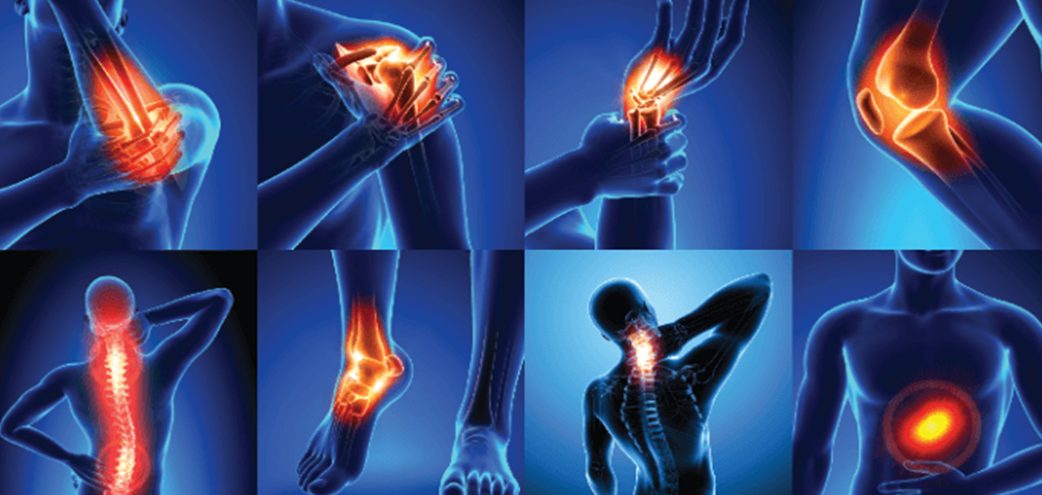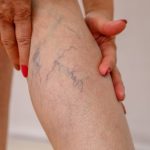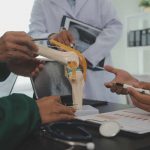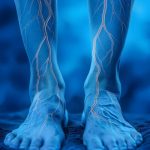Joint pain is a very common problem among adults of all ages. Knee, Shoulder, Elbow, Wrist, Ankle, Hip, Back and Neck pain are some of the top complaints of most people these days. But how do you know when joint pain has become a serious problem and when should you seek medical attention?
Pain in the joints can occur at many points throughout an individual’s life. It is how your body tells you something is wrong and acts as a signal to rest or seek treatment. Pain can be caused by, but is not limited to, injury, a particularly grueling workout, fatigue, or disease.
In most cases, joint pain will ease after a few days of rest or by taking over-the-counter medicine or performing simple daily exercises. There are, however, instances where joint pain is a sign of something more serious. In these cases, proper medical attention may be required to get you back on your feet. If the pain is affecting your daily life, or you experience any of the following signs, then it is time to talk to a doctor.
Chronic Joint Pain
Chronic joint pain can last for months or even years and may lead to many negative physical, mental, emotional, and social side effects. It may originate from injury or illness, and sometimes chronic joint pain develops for no known reason.
Tenderness, Swelling and Redness
Swelling in the joints is due to an increase of fluid in the tissue surrounding the joints. Joint swelling can occur from injuries, infections, and different types of arthritis. Swelling is often accompanied by other symptoms such as redness to the skin, warmth, and tenderness in the affected area.
Decreased Range of Motion
Reduced range of movement means that you feel a limitation in the way a joint moves. Maybe you can no longer straighten your knee or roll your shoulder? This reduced motion may also be paired with pain. Loss of movement may be due to mechanical issues like muscle injuries, neurological problems like nerve damage, or infections.
Joint Instability
If a joint feels weak, unstable, or unable to hold weight, then it is likely that there is some sort of muscle, ligament, or tendon damage.
Numbness/Tingling
Loss of sensation or a tingling feeling in a joint is generally down to nerve damage. This damage may be down to several factors and should be checked out by a doctor.
You have decided to seek professional help for your joint pain, but now the question is, what kind of doctor should you seek help from? Chiropractor? Physical Therapist? Interventional Pain Management Doctor? Your best option is to seek the advice of all three Board Certified Physicians. At Wesley Chapel Spine and Sports Medicine, we are offering our patients access to a multi-disciplinary fully integrated experience under one roof with cutting edge treatments and state of the art equipment. We are committed to easing pain, improving function, and enhancing the overall health of our patients.
Knee Pain
Visco-Supplementation Injection treatments are used to stimulate the production of new cartilage for the knee joint, providing lubrication and lessening friction within the joint. Knee bracing stabilizes the joint, realigns, and redistributes pressure within the joint. Once the pain has been managed and some mobility is restored, optimal structural alignment with Chiropractic (CBP) and strength, range of motion, flexibility, agility and conditioning with Physical Therapy should be prioritized to avoid future pain.
Neck and Back Pain
Precise Ultrasound or Fluoroscopic guided Injections such as trigger point and/or joint injections, facet joint injections, epidural injections may help relieve pain and improve mobility. Regenerative Medicine Treatments such as Stem Cell, PRP, Prolotherapy and/or Exosomescan help to accelerate the healing of injured muscles, tendons, ligaments, and joints. Chiropractic care is applied to ensure optimal structural alignment. A Brace can be used to straighten the spine, correct spinal curvatureand help stabilize the affected muscles to promote healing and prevent further injury and pain. Physical therapy is often highly successful at reducing neck and back pain because therapists work to stabilize postural imbalances and muscular weaknesses that can cause pain.
Hip Pain
Interventional Pain Management, Regenerative Medicine, Chiropractic Services, Physical Therapy can help with stretching the muscles of the hip to reduce tension, increase blood flow, reduce pain, reduce inflammation, increase range of motion and aid in healing and improving flexibility to the hip joint. Hip braces can reduce the stress across the joint, helping with alignment and natural healing.
Tenderness, Swelling and Redness
Swelling in the joints is due to an increase of fluid in the tissue surrounding the joints. Joint swelling can occur from injuries, infections, and different types of arthritis. Swelling is often accompanied by other symptoms such as redness to the skin, warmth, and tenderness in the affected area.
Decreased Range of Motion
Reduced range of movement means that you feel a limitation in the way a joint moves. Maybe you can no longer straighten your knee or roll your shoulder? This reduced motion may also be paired with pain. Loss of movement may be due to mechanical issues like muscle injuries, neurological problems like nerve damage, or infections.
Joint Instability
If a joint feels weak, unstable, or unable to hold weight, then it is likely that there is some sort of muscle, ligament, or tendon damage.
Numbness/Tingling
Loss of sensation or a tingling feeling in a joint is generally down to nerve damage. This damage may be down to several factors and should be checked out by a doctor.
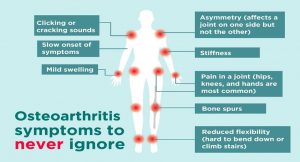
You have decided to seek professional help for your joint pain, but now the question is, what kind of doctor should you seek help from? Chiropractor? Physical Therapist?
Shoulder Pain
Interventional pain management, Regenerative medicine, Laser Therapy, Cryo-Therapy, Chiropractic Treatments, Physical therapy and/or a Shoulder brace may all be ideal solutions for treating shoulder joint pain.
Ankle and Foot Pain
Treatments for ankle and foot pain can include Interventional pain management, Regenerative Medicine, Laser Therapy, Chiropractic Treatments, Physical therapyand/or Bracing.
Elbow Pain
Those suffering from elbow joint pain may benefit from treatments such as Interventional pain management, Regenerative medicine, Laser Therapy, Cryo-Therapy and/or Physical Therapy. A brace may also be a good idea to help stabilize the affected region while it properly heals.
At Wesley Chapel Spine and Sports Medicine every patient’s condition is unique and will be fully assessed by one of our Board-Certified Physicians before a customized treatment plan is recommended. For more information contact us today at (813) 994-0151 to begin your path to healing!
Joint Pain Treatments Joint Pain Treatments

